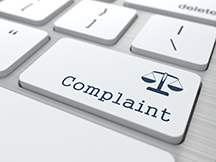March 17, 2014

Jeff Mazik, Vice President, Life Science Solutions, AssurX
Companies in the Pharmaceutical, Medical Device, and Biotech industries must meet many regulatory requirements for a number of regulatory agencies. Chief among these are requirements from the FDA, as well as from ISO, plus they must meet expectations from a number of other regulatory agencies, depending on the particular market. Implementing best practice solutions for a company’s quality processes is essential to insure compliance and quality for the organization.
When it comes to Complaints Management, a best practice approach can be summed up into the Six C’s of Complaints Management. These six terms help identify the areas that need to be addressed when initiating a best practice complaints management system.
The Six C’s are:
Collection: Collect as much information at intake of the complaint as possible. This is a major customer “touch point” in the complaints resolution process, so don’t waste it. Furthermore, the collection of incoming complaints must be reviewed to determine if the communication is truly a complaint. Depending on the determination of that review, handle the situation accordingly.

Communication: Information collected during intake and throughout the process must be easily available to everyone in the complaint resolution process. Furthermore, those people in the complaints resolution process that are assigned tasks must be provided communication and reminders to insure their tasks are being completed on-time and never “fall through the cracks”. From a customer satisfaction perspective, the customer reporting the event must be informed of the status of the complaint using form letters or via online queries using a web portal.
Compliance: The electronic system must meet all applicable regulatory requirements. Furthermore, a consistent approach must be used to determine how soon complaints should be reported to the applicable regulatory agency.
Control: As with any validated system, changes to the process need to be controlled and managed under change control procedures. However, controlling one’s business in terms of allocating available resources, trending historical complaint attributes, and proper management of returned products is also essential for the business to succeed.
Configurability: The solution you use should be easily configured, maintained, and updated, breaking you from a strong reliance on costly programmers, consultants, and specialized IT resources to make a change or to add a step to the process.
If you are interested in getting more detailed information on the Six C’s of Complaints Management Best Practices please request to view our recent 60-minute “Life Science Best Practices for Handling Complaints” Webinar here.


